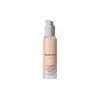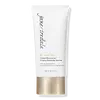Rose Inc Skin Enhance Luminous Skin Tint Serum Foundation Versus Jane Iredale Dream Tint Tinted Moisturizer SPF 15
What's inside
What's inside
 Key Ingredients
Key Ingredients

 Benefits
Benefits

 Concerns
Concerns

 Ingredients Side-by-side
Ingredients Side-by-side

Water
Skin ConditioningHexyl Laurate
EmollientGlycerin
HumectantPentylene Glycol
Skin ConditioningOctyldodecanol
EmollientSqualane
EmollientTamarindus Indica Seed Gum
Emulsion StabilisingJasminum Sambac Leaf Cell Extract
MaskingMangostin
Skin ConditioningAcetyl Tetrapeptide-2
Skin ConditioningSodium Hyaluronate
HumectantTocopherol
AntioxidantAlcaligenes Polysaccharides
EmollientDisteardimonium Hectorite
StabilisingAmodimethicone
Carbomer
Emulsion StabilisingMagnesium Chloride
Trisodium Ethylenediamine Disuccinate
Sodium Lauroyl Glutamate
Helianthus Annuus Seed Oil
EmollientPropylene Carbonate
SolventAluminum Hydroxide
EmollientGlucose
HumectantLysine
Skin ConditioningCaprylyl Glycol
EmollientBenzyl Alcohol
PerfumingSodium Hydroxide
BufferingCitric Acid
BufferingMica
Cosmetic ColorantCI 77891
Cosmetic ColorantCI 77491
Cosmetic ColorantCI 77492
Cosmetic ColorantCI 77499
Cosmetic ColorantWater, Hexyl Laurate, Glycerin, Pentylene Glycol, Octyldodecanol, Squalane, Tamarindus Indica Seed Gum, Jasminum Sambac Leaf Cell Extract, Mangostin, Acetyl Tetrapeptide-2, Sodium Hyaluronate, Tocopherol, Alcaligenes Polysaccharides, Disteardimonium Hectorite, Amodimethicone, Carbomer, Magnesium Chloride, Trisodium Ethylenediamine Disuccinate, Sodium Lauroyl Glutamate, Helianthus Annuus Seed Oil, Propylene Carbonate, Aluminum Hydroxide, Glucose, Lysine, Caprylyl Glycol, Benzyl Alcohol, Sodium Hydroxide, Citric Acid, Mica, CI 77891, CI 77491, CI 77492, CI 77499
Titanium Dioxide 5%
Cosmetic ColorantWater
Skin ConditioningStearic Acid
CleansingCaprylic/Capric Triglyceride
MaskingOctyldodecyl Neopentanoate
EmollientLeuconostoc/Radish Root Ferment Filtrate
AntimicrobialLactobacillus Ferment
Skin ConditioningGlycerin
HumectantGlyceryl Stearate
EmollientSimmondsia Chinensis Seed Oil
EmollientGlyceryl Acrylate/Acrylic Acid Copolymer
HumectantSpirulina Platensis Extract
Skin ProtectingHydrolyzed Rhodophyceae Extract
Carthamus Tinctorius Seed Oil
MaskingHelianthus Annuus Seed Oil
EmollientSambucus Nigra Extract
Skin ConditioningBoron Nitride
AbsorbentMica
Cosmetic ColorantButyrospermum Parkii Butter
Skin ConditioningCamellia Sinensis Leaf Extract
AntimicrobialVitis Vinifera Seed Extract
AntimicrobialPunica Granatum Extract
AstringentLavandula Angustifolia Oil
Masking1,2-Hexanediol
Skin ConditioningPolyhydroxystearic Acid
EmulsifyingAlumina
AbrasiveLinalool
PerfumingLimonene
PerfumingGeraniol
PerfumingCI 77489
Cosmetic ColorantCI 77491
Cosmetic ColorantCI 77492
Cosmetic ColorantCI 77499
Cosmetic ColorantCI 77288
Cosmetic ColorantTitanium Dioxide 5%, Water, Stearic Acid, Caprylic/Capric Triglyceride, Octyldodecyl Neopentanoate, Leuconostoc/Radish Root Ferment Filtrate, Lactobacillus Ferment, Glycerin, Glyceryl Stearate, Simmondsia Chinensis Seed Oil, Glyceryl Acrylate/Acrylic Acid Copolymer, Spirulina Platensis Extract, Hydrolyzed Rhodophyceae Extract, Carthamus Tinctorius Seed Oil, Helianthus Annuus Seed Oil, Sambucus Nigra Extract, Boron Nitride, Mica, Butyrospermum Parkii Butter, Camellia Sinensis Leaf Extract, Vitis Vinifera Seed Extract, Punica Granatum Extract, Lavandula Angustifolia Oil, 1,2-Hexanediol, Polyhydroxystearic Acid, Alumina, Linalool, Limonene, Geraniol, CI 77489, CI 77491, CI 77492, CI 77499, CI 77288
Ingredients Explained
These ingredients are found in both products.
Ingredients higher up in an ingredient list are typically present in a larger amount.
Ci 77491 is also hydrated iron III oxide. It's sole purpose is to give a red/pink hue to products.
Iron III oxides are classified as inorganic chemicals for coloring.
Synthetically created Ci 77491 is considered safer than those naturally found. This is because the synthetically created version may contain less impurities. Iron oxides are generally non-toxic and non-allergenic.
Learn more about CI 77491Ci 77492 is also hydrated iron III oxide. It's sole purpose is to give a yellow hue to products.
Iron III oxides are classified as inorganic chemicals for coloring.
Synthetically created Ci 77492 is considered safer than those naturally found. This is because the synthetically created version may contain less impurities. Iron oxides are generally non-toxic and non-allergenic.
Learn more about CI 77492Ci 77499 is also hydrated iron III oxide. It is created from mixing red and black iron oxides. This helps give shades of darkness to a product.
Iron III oxides are classified as inorganic chemicals for coloring.
Glycerin is already naturally found in your skin. It helps moisturize and protect your skin.
A study from 2016 found glycerin to be more effective as a humectant than AHAs and hyaluronic acid.
As a humectant, it helps the skin stay hydrated by pulling moisture to your skin. The low molecular weight of glycerin allows it to pull moisture into the deeper layers of your skin.
Hydrated skin improves your skin barrier; Your skin barrier helps protect against irritants and bacteria.
Glycerin has also been found to have antimicrobial and antiviral properties. Due to these properties, glycerin is often used in wound and burn treatments.
In cosmetics, glycerin is usually derived from plants such as soybean or palm. However, it can also be sourced from animals, such as tallow or animal fat.
This ingredient is organic, colorless, odorless, and non-toxic.
Glycerin is the name for this ingredient in American English. British English uses Glycerol/Glycerine.
Learn more about GlycerinHelianthus Annuus Seed Oil is the oil derived from the seeds of a Sunflower. Sunflower seed oil is non-fragrant. It is an emollient, meaning it helps to soften the skin.
Sunflower seed oil contains many fatty acids. The fatty acids found in sunflower seeds include (from highest amount to least): linoleic acid, myristic acid, palmitic acid, stearic acid, arachidic acid, oleic acid, and linolenic acid.
These fatty acids help the skin create ceramides. Ceramides play a role in repairing the skin barrier.
Helianthus Annuus Seed Oil helps moisturize the skin. This in turn helps the skin look more rejuvenated and smoother.
Sunflowers are rich in vitamin E.
Historians believe Indigenous cultures of North America domesticated sunflowers before corn. Thus they relied on sunflower oil for a variety of uses. One such use is moisturizing skin and hair.
Sunflower seed oil may not be fungal acne safe. We recommend speaking with a professional if you have any concerns.
Learn more about Helianthus Annuus Seed OilMica is a naturally occurring mineral used to add shimmer and color in cosmetics. It can also help improve the texture of a product or give it an opaque, white/silver color.
Serecite is the name for very fine but ragged grains of mica.
This ingredient is often coated with metal oxides like titanium dioxide. Trace amounts of heavy metals may be found in mica, but these metals are not harmful in our personal products.
Mica has been used since prehistoric times throughout the world. Ancient Egyptian, Indian, Greek, Roman, Aztec, and Chinese civilizations have used mica.
Learn more about MicaWater. It's the most common cosmetic ingredient of all. You'll usually see it at the top of ingredient lists, meaning that it makes up the largest part of the product.
So why is it so popular? Water most often acts as a solvent - this means that it helps dissolve other ingredients into the formulation.
You'll also recognize water as that liquid we all need to stay alive. If you see this, drink a glass of water. Stay hydrated!
Learn more about Water